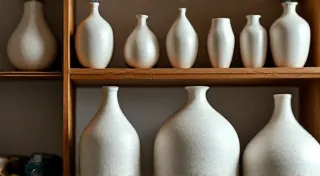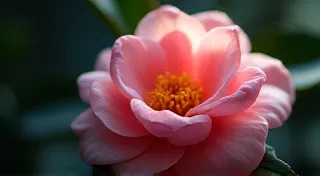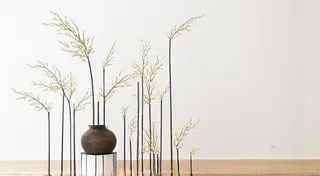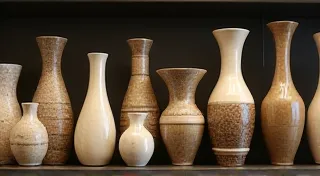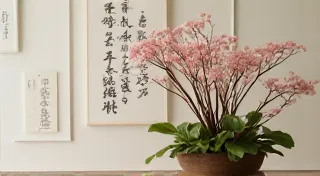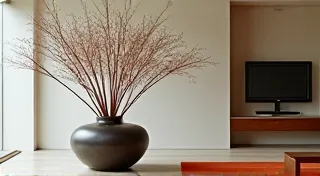Combining Ikebana with Other Art Forms
Ikebana, the art of Japanese flower arranging, is often perceived as a practice entirely its own – a meditative and deeply symbolic expression of nature’s beauty. However, the principles of Ikebana – balance, harmony, and respect for natural forms – lend themselves remarkably well to integration with other artistic disciplines. Exploring these intersections can lead to fascinating creative explorations and a deeper understanding of both Ikebana and the other art forms involved. It’s a pursuit that encourages mindful observation and a profound connection to the natural world, mirroring the principles explored in Ikebana and Mindfulness: Finding Peace Through Floral Art.
Ikebana and Painting: A Dance of Lines and Color
Consider the parallels between Ikebana and painting. Both involve composition, the use of line and shape, and the careful consideration of negative space. In painting, the artist uses brushstrokes to create an image; in Ikebana, the arranger uses branches, stems, and flowers to construct a three-dimensional composition. The flow and movement within a painting can be mirrored in the arrangement of flowers, creating a visual conversation between the two art forms. Imagine an Ikebana arrangement inspired by a particular painting, or a painting that attempts to capture the essence of a specific Ikebana style. The key is to respect the principles of both disciplines – the precision and intentionality of Ikebana balanced with the freedom of expression in painting. Think about how the use of color theory in painting can translate to selecting blooms for your Ikebana; complementary colors, analogous color schemes – all can contribute to a cohesive and visually striking arrangement. Perhaps incorporating unexpected elements, like a single, carefully placed stone, can echo the use of textures in a painterly style. The deliberate restraint often found in Japanese art, influencing both painting and Ikebana, highlights the power of suggestion and the beauty of imperfection. A painter aiming to capture the fleeting beauty of a cherry blossom might find inspiration in the transient nature of an Ikebana arrangement.
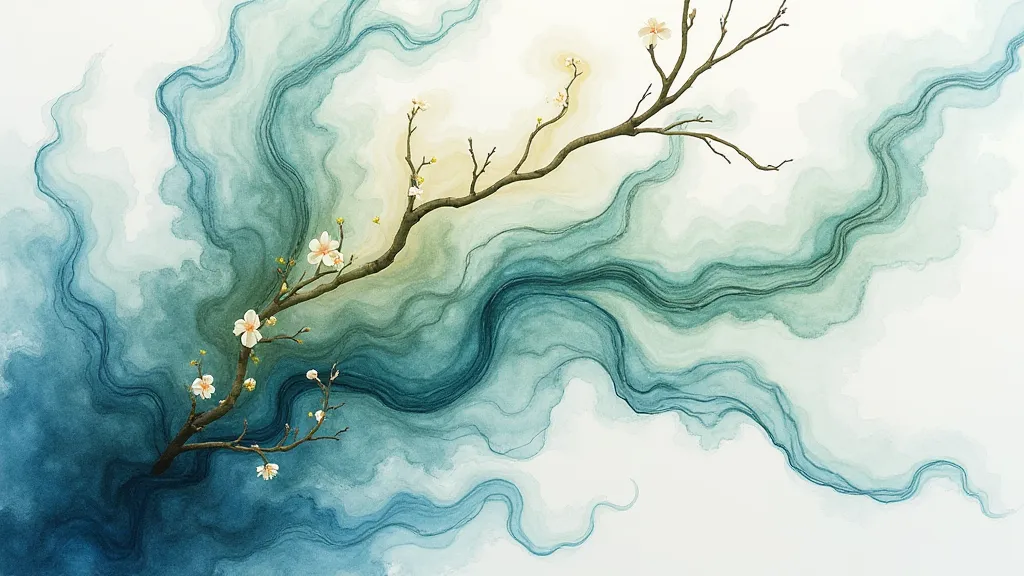
Sculpture and Ikebana: Volume and Presence
The three-dimensionality of sculpture finds a beautiful echo in Ikebana. While Ikebana arrangements are inherently three-dimensional, considering them in relation to sculptural forms can influence the design process. Sculptors often manipulate volume and mass to create impact; similarly, in Ikebana, the placement and arrangement of elements can dramatically alter the perceived weight and presence of the arrangement. Think about using unconventional materials within your Ikebana arrangement – dried branches, stones, or even small found objects – to create textures and visual interests that resonate with sculptural qualities. The incorporation of non-floral elements can be especially powerful. The balance and asymmetry often found in Ikebana are reminiscent of many minimalist sculptures, emphasizing form and negative space. Experiment with creating a focal point within your arrangement by strategically placing larger elements, or use varying heights to create a dynamic and engaging composition. When selecting materials, consider not only their visual appeal but also their textural qualities. A rough-hewn branch can add a sense of organic rawness, while a smooth river stone can provide a contrasting element of serenity.
Calligraphy and Ikebana: Finding Harmony in Lines
The elegance and precision of Japanese calligraphy (Shodo) share a profound connection with Ikebana. Both disciplines value the beauty of a single, deliberate stroke – whether it's the arc of a calligraphy brush or the angle of a carefully placed branch. The principles of balance and harmony found in calligraphy – the interplay of thick and thin lines, the purposeful use of negative space – directly translate to the design of Ikebana arrangements. Try creating an Ikebana arrangement that is visually inspired by a particular calligraphic style or poem. The arrangement might even incorporate a single, carefully placed calligraphic scroll to enhance the overall aesthetic. Many Ikebana arrangements utilize simple, flowing lines that mirror the elegance of brushstrokes, particularly in styles that emphasize natural movement. Consider the careful placement of each stem, allowing it to create a visual “line” within the overall design, echoing the deliberate strokes of a calligrapher. The concept of *ma* - the intentional use of space – is central to both art forms, contributing to a sense of tranquility and balance.
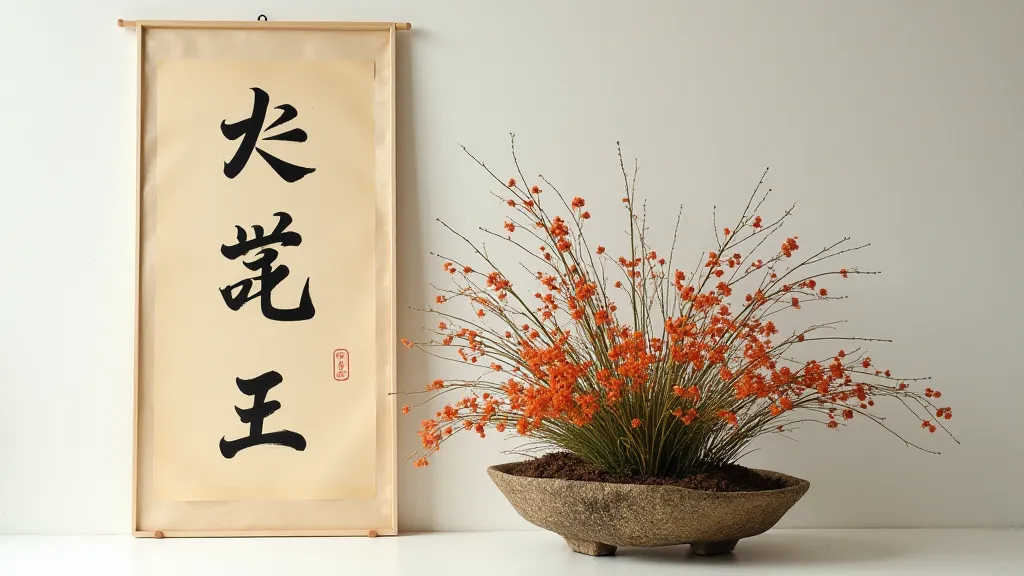
Working with Branches: The Skeleton of an Arrangement
The foundation of any Ikebana arrangement often relies heavily on the use of branches. Their angle, thickness, and even their texture can profoundly impact the overall aesthetic. Learning how to select and utilize branches effectively is a crucial skill for any aspiring Ikebana artist. Understanding the principles of structural integrity is just as important as artistic expression. Many arrangements start with a carefully chosen branch acting as the central axis, influencing the placement and orientation of all other elements. The skill of working with branches isn't just about arrangement; it’s about finding beauty in the natural imperfections of wood – the knots, the twists, the subtle variations in color. For detailed guidance on this critical aspect of Ikebana, you can delve deeper into Working with Branches in Ikebana: Techniques and Tips.
Beyond Boundaries: Experimentation and Innovation
The possibilities for combining Ikebana with other art forms are virtually endless. These are just a few starting points for exploration. The true beauty lies in experimentation and allowing your creativity to lead the way. Don’t be afraid to break the traditional boundaries and see what unique and compelling works you can create. Remember that respecting the underlying principles of both Ikebana and the other art form is key to creating a harmonious and meaningful combination. Perhaps you could translate a musical composition into an Ikebana arrangement, using different floral elements to represent different instruments or melodic lines. Or, imagine creating a series of Ikebana arrangements that evolve over time, mirroring the progression of a theatrical performance. You could even incorporate unconventional materials like recycled plastics or found objects to create arrangements that address contemporary social issues.
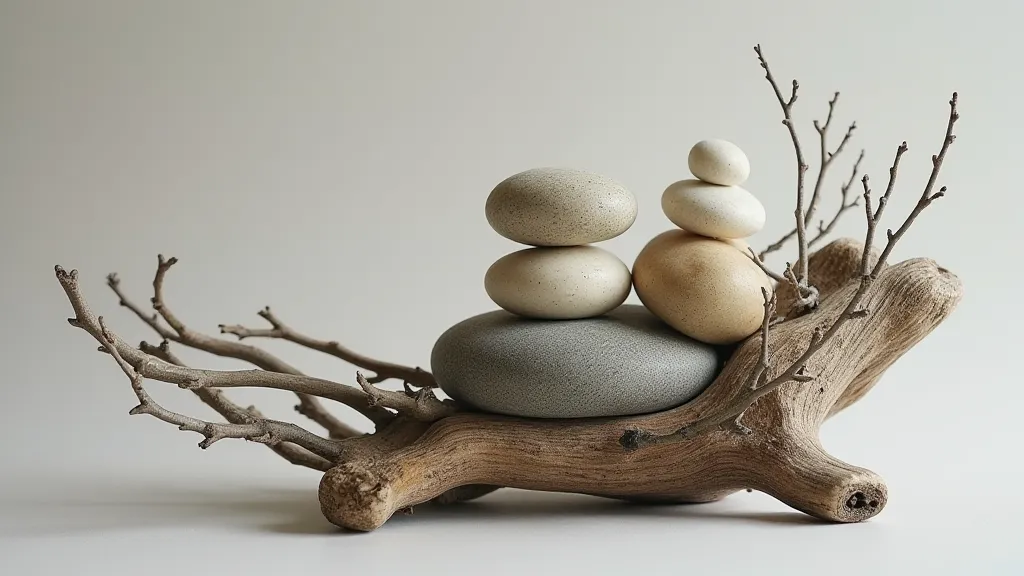
The Palette of Nature: Selecting Flowers and Foliage
The visual impact of any Ikebana arrangement is intrinsically linked to the selection of flowers and foliage. Beyond simply choosing attractive blooms, a keen eye for color, texture, and form is essential. Consider the symbolism associated with different flowers – for example, cherry blossoms often represent the fleeting nature of beauty, while chrysanthemums are associated with longevity. The choices also influence the mood and message of the arrangement. Learning to identify different types of foliage and understanding their contribution to the overall design is just as important as selecting the flowers themselves. When working with a limited palette, the emphasis shifts to the subtle nuances of form and texture. For more information on choosing the right flowers and foliage for your Ikebana creations, consult Selecting Flowers and Foliage for Ikebana.
Ikebana for Limited Spaces: Finding Harmony in Miniature
While Ikebana is often associated with grand displays, it can be just as rewarding to create miniature arrangements for smaller spaces. These compact creations offer a unique opportunity to focus on the essential elements of Ikebana – balance, harmony, and respect for natural forms. Adapting traditional techniques to work within a limited space requires a careful consideration of scale and proportion. Choosing smaller branches and flowers allows for intricate details to be showcased. The principles remain the same, but the approach demands a heightened sense of precision and economy. Even in a tiny arrangement, the careful consideration of negative space and the deliberate placement of each element can create a profound sense of serenity and beauty.
The Art of Presence: Finding Peace Through Floral Arrangement
Beyond the aesthetic beauty of the final product, creating Ikebana arrangements can be a profoundly meditative practice. The slow, deliberate movements involved in arranging flowers and branches encourage a sense of presence and mindfulness. The act of observing the natural forms – the subtle curves of a stem, the delicate texture of a petal – allows one to connect with the beauty and fragility of the natural world. The focus required to create a balanced and harmonious arrangement allows for a quiet escape from the stresses of daily life. The process itself becomes a form of moving meditation, fostering a sense of peace and tranquility. For a deeper exploration of the mindful aspects of Ikebana, see Ikebana and Mindfulness: Finding Peace Through Floral Art.
